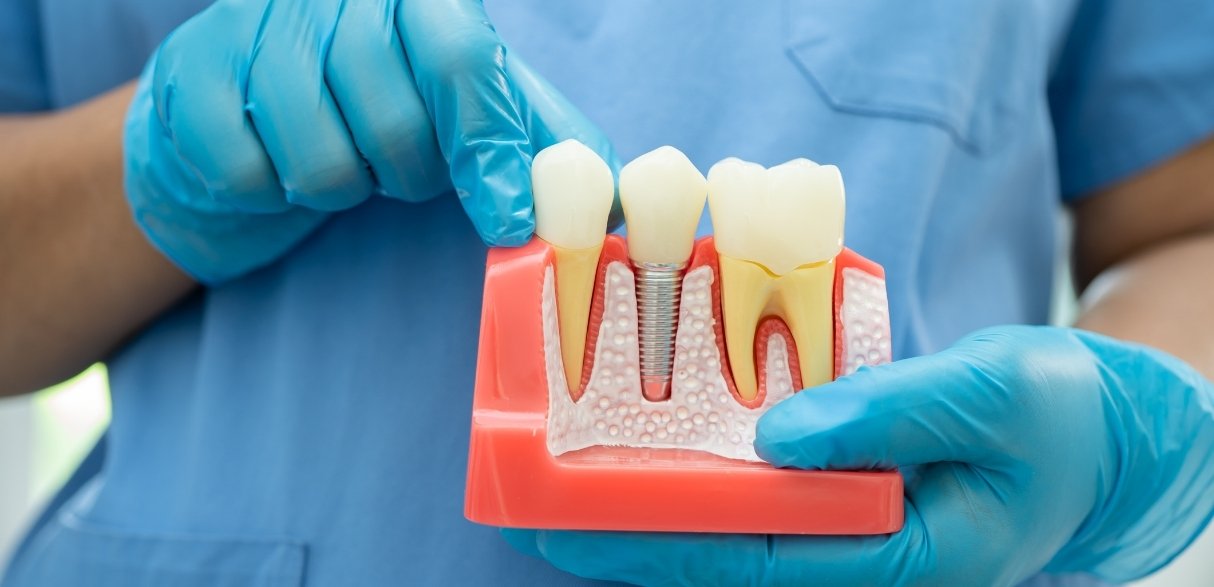
Root canals often have a reputation for being painful and intimidating, leading many to delay or even avoid treatment. These common fears stem from misconceptions and myths, which can create unnecessary anxiety and stop people from addressing critical dental health needs. Today, root canals are a routine, safe, and effective solution to save natural teeth and relieve pain caused by infection.
Clearing up these myths is essential for anyone who may need this procedure. Knowing the truth about root canals empowers better decisions, eases anxiety, and ensures optimal oral health.
What Is a Root Canal?
A root canal is a dental procedure that treats infection in the tooth’s pulp, the inner tissue that contains nerves and blood vessels. When a tooth’s pulp becomes infected due to deep decay, injury, or trauma, the infection can spread, causing severe pain and potentially leading to an abscess. A root canal removes this infection, saving the tooth and preventing further damage.
During the procedure, a dentist or endodontist removes the infected pulp, cleans and disinfects the inside of the tooth, and then seals it with a filling. In some cases, a crown is placed on the tooth for added protection. Root canals not only eliminate pain but also allow patients to keep their natural teeth, which is always preferable to extraction.
Root canals are often recommended in cases of deep tooth decay, cracks or fractures that reach the pulp, and persistent pain or sensitivity. They can also be necessary when a tooth suffers trauma, even without visible damage. Root canals prevent the need for extraction, saving patients from more complex treatments, such as implants or bridges, that often follow tooth removal.
Myths and Misconceptions About Root Canals
Myth #1: Root Canals Are Extremely Painful
One of the biggest misconceptions is that root canals are extremely painful. Many people associate the procedure with intense pain, which makes them fearful and hesitant to undergo treatment.
Thanks to advancements in dental technology and anesthesia, root canals are now mostly painless. Dentists use local anesthesia to numb the area, ensuring that patients feel little more than mild discomfort, similar to a routine filling.
Ironically, root canals often relieve pain because they remove the infection causing the toothache. After the procedure, patients commonly report feeling significant relief, not pain.
Myth #2: Root Canals Cause Illness
Some people believe root canals lead to illness by allowing harmful bacteria to spread through the body, causing infections and even systemic diseases.
Scientific studies have debunked this myth. They show no link between root canals and other illnesses. In fact, properly performed root canals eliminate infection rather than spreading it. The tooth is carefully disinfected before being sealed, preventing the bacteria from spreading.
This misconception dates back to outdated research from the early 1900s, which falsely suggested that root canals might contribute to illnesses. Modern research and improved dental techniques have thoroughly disproven this outdated theory.
Myth #3: Extracting the Tooth Is Better Than Getting a Root Canal
Another common belief is that pulling a tooth is easier, safer, and less troublesome than getting a root canal.
Dentists prioritize saving natural teeth whenever possible, and root canals help achieve this goal. Natural teeth are better for overall dental health, helping maintain proper alignment and function. Extraction, on the other hand, can lead to complications, including shifting of surrounding teeth and bone loss over time.
While some think extraction is the cheaper option, it often leads to additional expenses. Replacing an extracted tooth with an implant or bridge is usually more costly than a root canal and can require ongoing maintenance. Keeping your natural teeth saves you from these potential costs and health concerns.
Myth #4: Root Canals Are Only Temporary Fixes
There is a misconception that root canals don’t last and are merely a temporary solution.
Root canals can be a long-term fix, with treated teeth often lasting a lifetime when cared for properly. The procedure removes the infection and saves the natural tooth, which, with good oral hygiene, can remain healthy and functional.
Simple practices like brushing, flossing, and attending regular dental check-ups can help maintain a root-canal-treated tooth for years. It is also essential to avoid habits that may harm your teeth, like chewing on hard objects or grinding your teeth, which can weaken a treated tooth.
Myth #5: The Procedure Takes Multiple Long Visits
Many avoid root canals due to the assumption that they require multiple, lengthy appointments.
Most root canal treatments are completed in one or two visits. The number of appointments depends on the condition of the tooth, but advancements in dental technology have streamlined the process.
Rotary endodontics, digital imaging, and other advancements have made root canals faster and more efficient. These tools reduce the time spent in the dental chair, meaning you can get the care you need without sacrificing hours of your time.
Myth #6: Root Canals Are Only for Adults
People often assume that root canals are strictly an adult procedure.
While root canals are more common in adults, they are sometimes necessary for younger patients, too. Children and teenagers may need root canals if their tooth pulp is damaged due to decay or injury. Preserving the tooth is crucial for dental development in these cases.
Pediatric dentists and endodontists are trained to perform root canals on younger patients safely. When necessary, they tailor the procedure to fit the needs of children and teens, ensuring a comfortable experience while preserving the integrity of the tooth.
How to Decide if You Need a Root Canal?
Knowing when to seek a root canal can prevent unnecessary pain and complications. Some signs that a root canal may be needed include prolonged tooth sensitivity, especially to hot or cold, and persistent pain or swelling near the affected tooth. Pain when biting or chewing can also indicate a pulp infection requiring a root canal.
The best way to determine if you need a root canal is to consult a professional. Dentists or endodontists can evaluate the tooth with X-rays and examinations to provide a proper diagnosis. They will review your symptoms, assess the extent of the infection or damage, and discuss treatment options. An early consultation addresses the issue promptly and may save you from experiencing worsening pain or infection.
Regular checkups play a significant role in identifying problems before they worsen. If you notice any discomfort or changes in your teeth, see your dentist. Prompt attention can make all the difference in maintaining your oral health.
This post has tackled some of the most persistent myths surrounding root canals, showing that they’re far from the painful, risky, or unreliable procedure they’re often thought to be. Root canals are safe, effective, and a crucial option for saving natural teeth. They offer relief from pain and prevent future complications, proving they are a reliable long-term solution.
If you have concerns or questions about root canals, do not hesitate to talk to our dentists. Understanding the facts can help you make informed choices and ensure you get the best possible care for your dental health.




